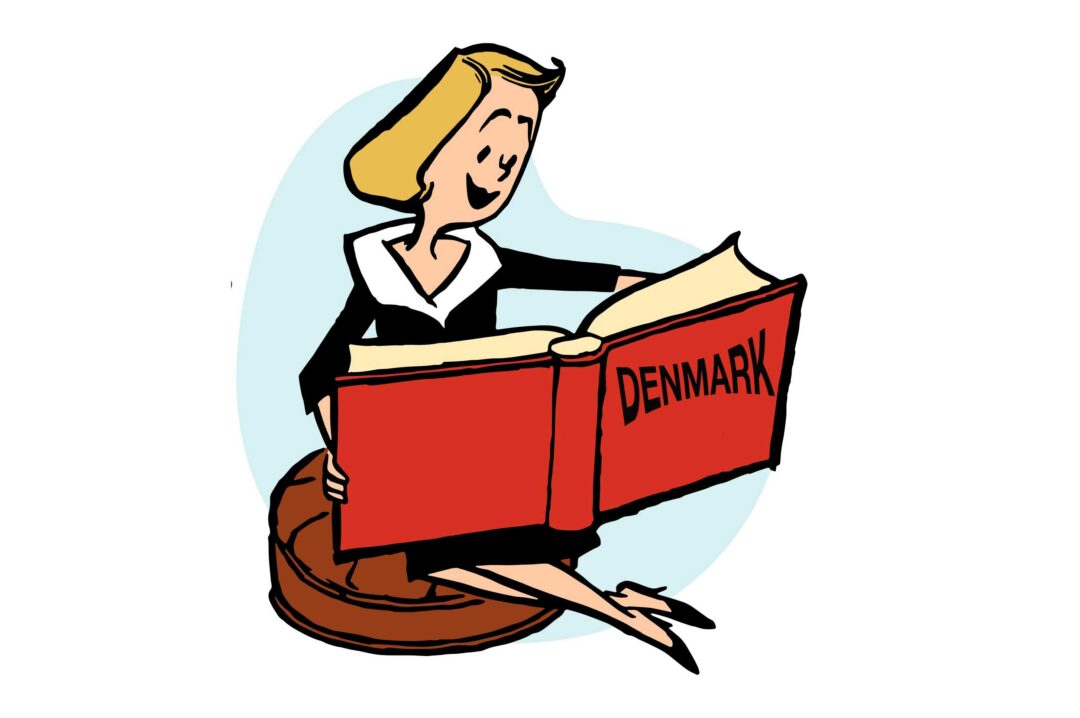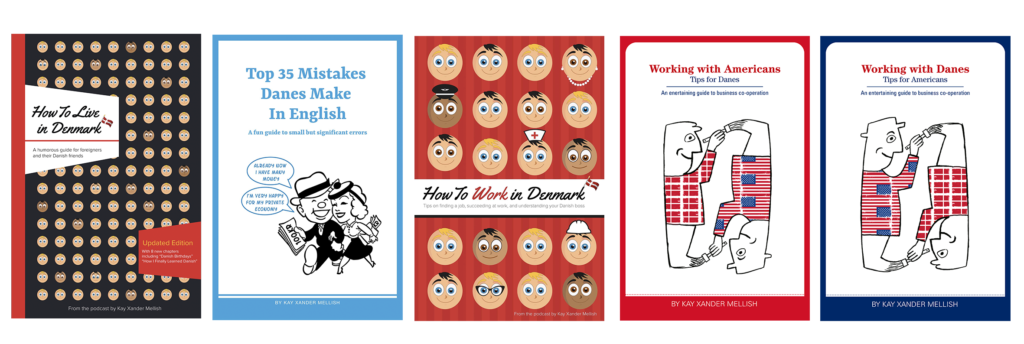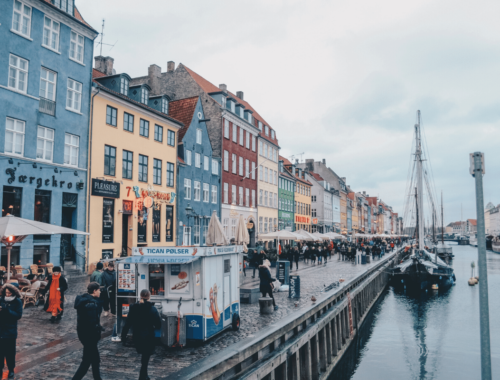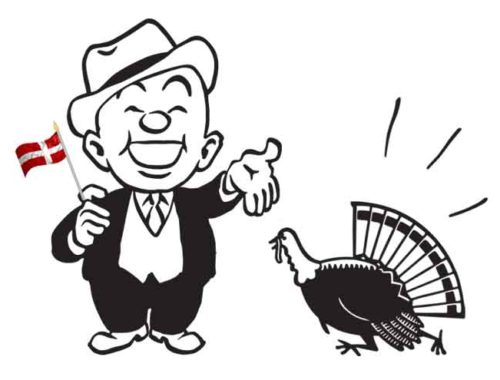I love old books. I love the kind of old books you get at antique bookstores or on the Internet Archive. And I have a good collection of old books about Denmark.
I like old travel guides, most of which are still pretty useful because the Danes don’t tear a lot of things down the way they do, in say, Los Angeles or Hong Kong. In Denmark you’ll pretty much find most castles and monuments right where somebody left them hundreds of years ago.
If you want to see a famous church or square or the Jelling Stone, your Baedecker guidebook from 1895 will work just fine for you in most cases.
“How to Be a Dane”
But I can also recommend two great older books on Denmark, which you can probably find at your local second-hand book shop, or on DBA, the Danish second-hand site owned by eBay.
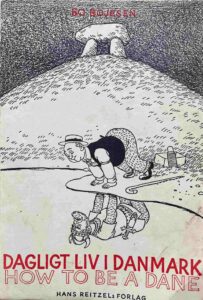 One is called “How to be a Dane” – it’s from 1950, by a Danish cartoonist called Bo Bojsen. The tone is lightly humorous, what the Danes like to call “self-irony.”
One is called “How to be a Dane” – it’s from 1950, by a Danish cartoonist called Bo Bojsen. The tone is lightly humorous, what the Danes like to call “self-irony.”
Bo writes,
“How to be a Dane. This book is designed to present a general picture of the average Dane – Mr. Middleman, a character who in his own opinion is well above the average in almost everything.
As every Dane knows, Denmark is the center of the universe. Should anyone doubt this, let him stand in the middle of the Townhall Square in Copenhagen. Here with his own eyes he will be able to confirm that the world revolves around this square.
The further from this spot anything lies, the more insignificant it appears. The many things beyond the horizon will therefore pass quite unnoticed.”
Hans Christian Andersen, Thorvaldsen, and Søren Kierkegaard
Even 70 years ago, Danes were quite confident about the superiority of their educational system, according to Bo Bojsen.
“As the smallest Danish child knows, the people of Denmark are educated beyond the wildest dreams of less enlightened people. This is inevitable in people born in the same latitude and longitude as Hans Christian Andersen, the sculptor Thorvaldsen and Søren Kierkegaard.
The works of Kierkegaard, Denmark’s great philosopher, are to be found in every Danish home, with a possible exception of 98% of them.
And Thorvaldsen’s sculptures may be admired by foreigners in a special museum, under quite favorable conditions, and the Danes are so considerate that they wouldn’t dream of crowding foreigners by visiting the place themselves.”
That was Bo Bojsen, writing in 1950, and I can tell you that in 2021 the Thorvaldsen museum is still mostly empty, most of the time.
As I said in a previous post, if you want to meet up with a secret lover, make a date at the Thorvaldsen museum, because you will not meet anyone you know from Denmark there.
“Danish Delight”
Another old book about Denmark I can recommend is called Danish Delight.
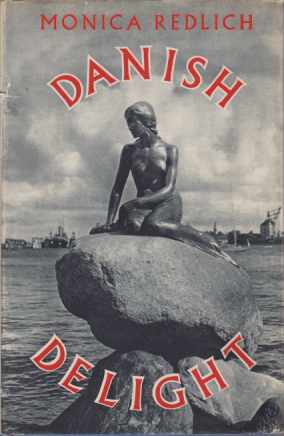 It was written by a woman who came to Denmark for love in the 1930s, just before the second World War.
It was written by a woman who came to Denmark for love in the 1930s, just before the second World War.
Monica Redlich was from England, and she settled down on Christianshavn in Copenhagen with her husband Hugo. The book is about how she experiences Denmark as a newcomer and learns about Danish culture.
Some of the details have changed – the sound of Copenhagen is no longer clanging tram bells and metal one-man garbage carts.
But some of it is familiar. Monica struggles to learn Danish just like the rest of us.
Danish when one first sees it looks like some nightmare wilderness, full of sharp pointed rocks and stones and unexpected puddles.
Its pages bristle with aa’s and ø’s and aes and unsayable sequences ending in j.
Just to make things harder there are occasional words which look exactly like English but of course cannot be, and when one hears it spoken one doubts one’s sanity.
But with time, and the help of her husband, she does slowly learn Danish.
“It struck me, suddenly, while coming back over the bridge, that I had bought several things without a dictionary, and that for several weeks now I have quite forgotten to take either a dictionary or notebook of essential words with me when I went shopping.
The shop people can still floor me easily if they are too amiable and talk a lot, but in the simple transactions begin with “I will willingly have” they can’t frighten me any more.”
Personally, I remember when I first started shopping in Denmark. I confused a “kalkun” (turkey) with a “kanine” (rabbit) and wondered why there was so much bunny meat in the supermarket.
If you know any other great older books about Denmark, let me know in the comments below.
Until then, you can always enjoy my own books about Denmark – How to Live in Denmark, How to Work in Denmark, Working With Danes, Tips for Americans and Top 35 Mistakes Danes Make in English. They’re available on our webshop, and on Amazon, Saxo, Apple Books, Google Play, and Barnes and Noble Nook.
.

